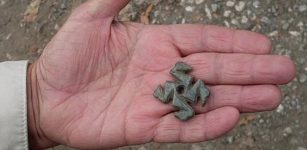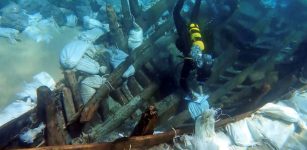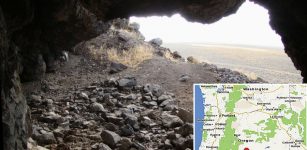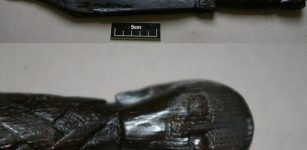New Evidence Of Human Habitation At Panga ya Saidi Cave, Kenya That Dates Back 78,000 Years
AncientPages.com - Excavations conducted in Kenya’s Panga ya Saidi cave site, have delivered evidence for long-lasting human occupation ranging from the Middle Stone Age to the Iron Age.
This evidence shows gradual (not dramatic) changes in cultural, technological and symbolic innovations beginning at 67,000 years ago, but totally, the area was occupied for 78,000 years. There is no evidence that humans were using coastal ‘super-highways’ for migrations.
Researchers led by the Max Planck Institute for the Science of Human History excavated and analyzed Panga ya Saidi cave site, located 15 km from the modern coast.
The team discovered “carefully prepared stone tool toolkits of the Middle Stone Age occur in deposits dating back to 78,000 years ago, but a distinct shift in technology to the Later Stone Age is shown by the recovery of small artefacts beginning at 67,000 years ago.
The miniaturization of stone tools may reflect changes in hunting practices and behaviors,“ researchers report in a press release.
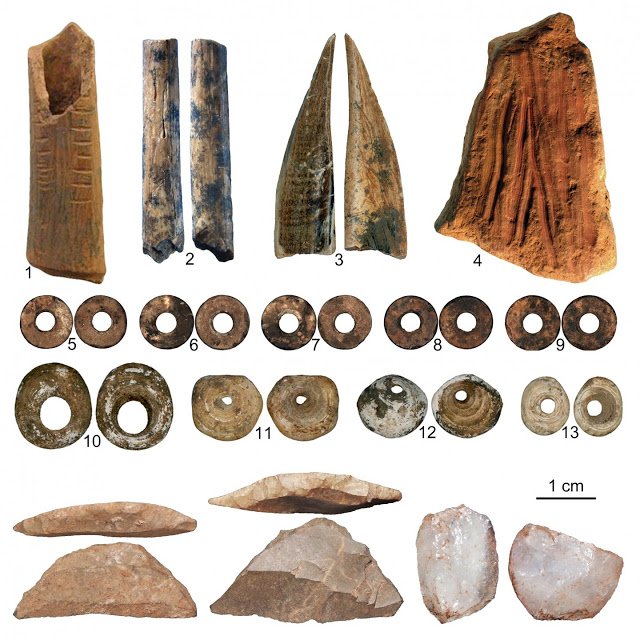
Worked artefacts from Panga ya Saidi cave (from left to right): worked red ochre; bead made of a sea shell; ostrich eggshell beads; bone tool; close-up of the bone tool showing traces of scraping.
© Francesco D'Errico and Africa Pitarch
A mix of technological innovations has been found in Panga ya Saidi’s layers dated to approximately 67,000 years ago and after 67,000, however, has a and no radical break of behavior can be detected at any time, arguing against the cognitive or cultural ‘revolutions’ theorized by some archaeologists.
Moreover, no notable break in human occupation occurs during the Toba volcanic super-eruption of 74,000 years ago, supporting views that the so-called ‘volcanic winter’ did not lead to the near-extinction of human populations, though hints of increased occupation intensity from 60,000 years ago suggests that populations were increasing in size.
The deep archaeological sequence of Panga ya Saidi cave has produced a remarkable new cultural record indicative of cultural complexity over the long term. Among the recovered items are worked and incised bones, ostrich eggshell beads, marine shell beads, and worked ochre. Panga ya Saidi has produced the oldest bead in Kenya, dating to ~65,000 years ago. At about 33,000 years ago, beads were most commonly made of shells acquired from the coast.
While this demonstrates contact with the coast, there is no evidence for the regular exploitation of marine resources for subsistence purposes. Ostrich eggshell beads become more common after 25,000 years ago, and after 10,000 years ago, there is again a shift to coastal shell use. In the layers dating to between ~48,000 to 25,000 years ago, carved bone, carved tusk, a decorated bone tube, a small bone point, and modified pieces of ochre were found. Though indicative of behavioral complexity and symbolism, their intermittent appearance in the cave sequence argues against a model for a behavioral or cognitive revolution at any specific point in time.
“The East African coastal hinterland and its forests and have been long considered to be marginal to human evolution so the discovery of Panga ya Saidi cave will certainly change archaeologists’ views and perceptions,” Dr. Nicole Boivin, Project Principal Investigator and Director of the Department of Archaeology at the Max Planck Institute for the Science of Human History, said.
“Occupation in a tropical forest-grassland environment adds to our knowledge that our species lived in a variety of habitats in Africa,” Dr. Patrick Roberts, Group Leader of the Stable Isotopes Lab, added.
“The finds at Panga ya Saidi undermine hypotheses about the use of coasts as a kind of ‘superhighway’ that channeled migrating humans out of Africa, and around the Indian Ocean rim,” observes Professor Michael Petraglia.
Researched has been announced in Nature Communications.
AncientPages.com







